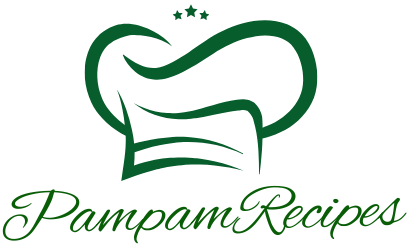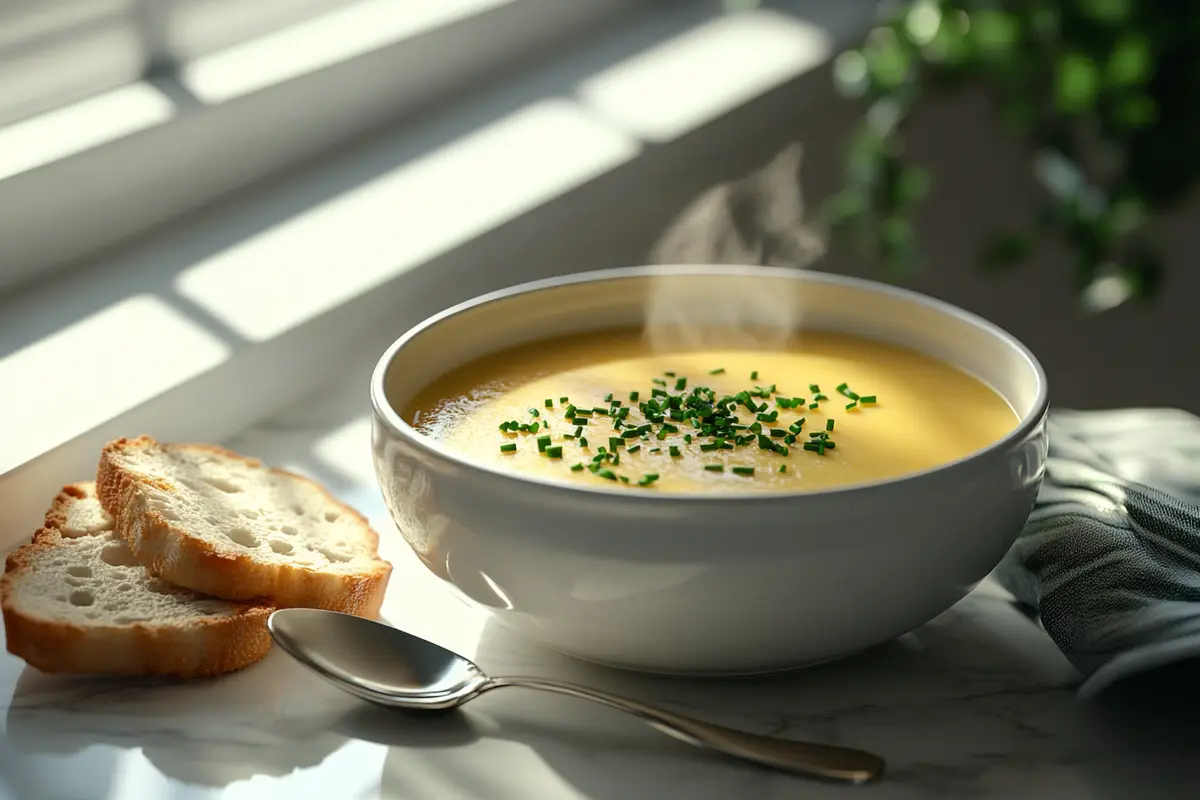Introduction: Understanding the Role of Thickeners in Potato Soup
Potato soup is a classic comfort food loved for its creamy texture and hearty flavor. But have you ever wondered, what is the thickener in potato soup that gives it that irresistible consistency? From traditional ingredients like flour to modern alternatives such as blended vegetables, thickeners play a vital role in transforming a simple soup into a rich, velvety dish.
In this article, we’ll explore the different types of thickeners, discuss their benefits, and provide an easy-to-follow recipe to make the perfect potato soup at home. Whether you’re a fan of creamy, dairy-based options or prefer plant-based alternatives, we’ve got you covered. Let’s dive into the world of potato soup thickeners and discover how to create a bowl that’s both delicious and satisfying.
Introduction to Potato Soup Thickeners
What Makes Potato Soup Creamy and Thick?
The secret to a rich and creamy potato soup lies in the thickener. A thickener doesn’t just enhance the texture—it also helps blend the flavors into a cohesive dish. Traditional recipes often rely on classic ingredients like roux (a mixture of flour and butter) to achieve that signature thickness. However, modern approaches incorporate potatoes themselves or alternative thickeners to cater to different dietary needs.
Thickeners are essential because they add body to the soup, ensuring every spoonful feels satisfying. Whether it’s a starch, dairy product, or vegetable puree, the right thickener transforms a watery soup into a comforting masterpiece.
Common Types of Thickeners Used in Potato Soup
When it comes to what is the thickener in potato soup, there are several options to choose from:
- Starch-Based Thickeners: Flour, cornstarch, and potato starch are widely used for their ability to bind liquids and create a smooth texture.
- Dairy-Based Thickeners: Heavy cream, sour cream, and cream cheese not only thicken the soup but also add richness and flavor.
- Vegetable-Based Thickeners: Blending cooked potatoes, cauliflower, or other vegetables directly into the soup is a natural way to achieve thickness while keeping the dish gluten-free.
Each type of thickener offers unique benefits, making it easy to customize your soup based on taste and dietary preferences.
Based on the sitemap content, the following internal link is relevant for enhancing the article:
What Can I Add to Potato Soup to Add Flavor?
This can be used to provide readers additional insights into elevating the flavor of potato soup.
Types of Thickeners for Potato Soup
1. Using Potatoes Themselves as a Thickener
One of the most natural answers to what is the thickener in potato soup lies in the star ingredient itself: potatoes. By blending a portion of the cooked potatoes, you can create a creamy base without needing additional ingredients. This method keeps the soup gluten-free and allows the potato flavor to shine.
To thicken the soup using potatoes, simply remove a portion of the cooked potatoes, blend them until smooth, and stir them back into the pot. This method not only thickens the soup but also maintains its rustic, homemade feel. It’s ideal for those looking for a clean and simple approach.
2. Starch-Based Thickeners
Starch-based thickeners, such as flour, cornstarch, and potato starch, are traditional choices for creating a velvety soup. A roux—a mixture of flour and butter cooked together—is often used as a base in classic recipes. This mixture adds both thickness and a slightly nutty flavor.
For a quicker option, cornstarch or potato starch can be whisked with water to form a slurry. Add the slurry to the simmering soup, stirring constantly to avoid lumps. These thickeners are perfect for achieving a smooth texture without altering the soup’s taste significantly.
For more ideas on enhancing potato soup, check out our guide to adding flavor to potato soup.
3. Dairy-Based Thickeners
Dairy products like heavy cream, sour cream, and cream cheese are popular choices for thickening potato soup. They not only add richness but also create a silky texture. Heavy cream is often added toward the end of cooking to prevent curdling, while cream cheese can be melted into the soup for a tangy twist.
Sour cream, when stirred in just before serving, enhances both the flavor and the creaminess. This option is particularly appealing if you’re looking for a slightly tangy, indulgent soup.
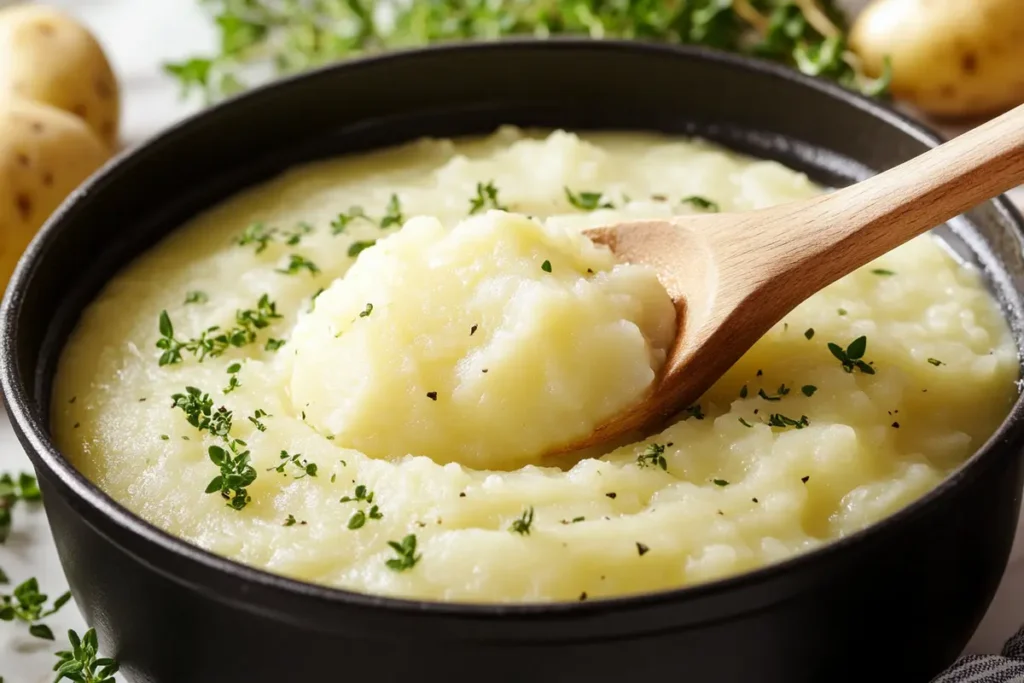
Recipe: Classic Creamy Potato Soup
Ingredients for Potato Soup
- 4 large russet potatoes, peeled and diced
- 1 medium onion, finely chopped
- 2 cloves garlic, minced
- 4 cups chicken or vegetable broth
- 1 cup heavy cream
- 2 tablespoons butter
- 2 tablespoons flour (optional)
- Salt and pepper, to taste
- Optional toppings: shredded cheese, chopped chives, bacon bits
Step-by-Step Cooking Instructions
Step 1: Sauté Aromatics
In a large pot, melt the butter over medium heat. Add the onions and garlic, sautéing until soft and fragrant, about 3–4 minutes.
Step 2: Cook the Potatoes
Add the diced potatoes and broth to the pot. Bring to a boil, then reduce the heat and let it simmer for 15–20 minutes, or until the potatoes are tender.
Step 3: Blend for Thickness
Remove about one-third of the cooked potatoes and blend them until smooth. Stir the blended potatoes back into the pot to naturally thicken the soup.
Step 4: Add the Dairy
Reduce the heat to low and stir in the heavy cream. For a thicker soup, mix the flour with a little water to make a slurry, then stir it into the pot.
Step 5: Season and Serve
Season the soup with salt and pepper to taste. Serve hot, garnished with your favorite toppings, such as shredded cheese or chopped chives.
Nutritional Information for Potato Soup
Nutritional Benefits of Potato Soup Ingredients
Potato soup is not only delicious but also packed with nutrients, depending on the ingredients you use. Potatoes, the star of this dish, are an excellent source of vitamin C, potassium, and dietary fiber. They are naturally low in fat, making them a healthy base for soups.
Adding a thickener in potato soup like heavy cream or cheese can increase its calorie count but also boost its richness and flavor. For a lighter version, using blended vegetables or low-fat milk can provide a satisfying texture without as many calories.
Including garlic and onions enhances the soup’s antioxidant properties, while broth adds hydration and essential minerals.
Nutritional Content Table (Per 100g)
Here’s a breakdown of the nutritional content for a standard potato soup recipe:
| Nutrient | Amount (per 100g) |
|---|---|
| Calories | 90 kcal |
| Protein | 2 g |
| Carbohydrates | 12 g |
| Sugars | 2 g |
| Fat | 4 g |
| Sodium | 280 mg |
Understanding the nutritional value of your soup helps you make informed decisions about portion size and ingredient substitutions to suit your dietary needs.
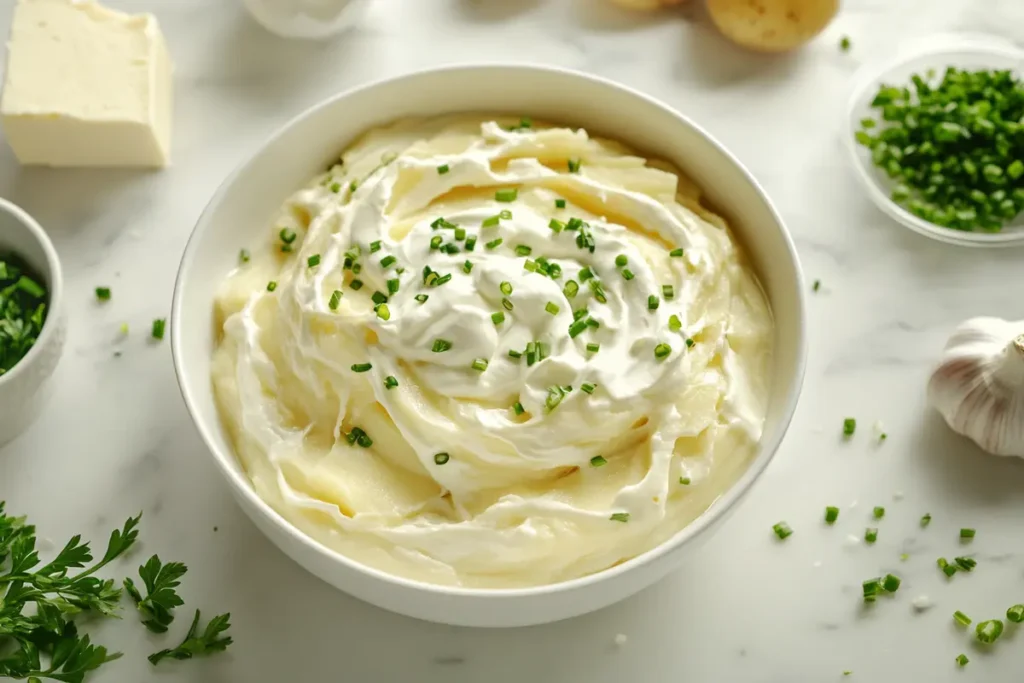
Tips for Perfecting Potato Soup
Avoiding Common Mistakes When Thickening Soup
When it comes to what is the thickener in potato soup, the method and ingredients you choose can make all the difference. Here are some common mistakes to avoid:
- Using Too Much Thickener
Adding too much flour, cornstarch, or potato starch can result in an overly thick or gloopy soup. To fix this, gradually add your thickener while stirring and check the consistency as you go. - Not Blending Properly
If you’re using blended potatoes or vegetables as a thickener, ensure they are pureed smoothly. Any lumps can affect the soup’s texture. - Curdling Dairy
High heat can cause dairy-based thickeners like heavy cream or sour cream to curdle. To prevent this, lower the heat before adding these ingredients and stir gently.
Customizing Potato Soup for Dietary Preferences
Potato soup is versatile and easy to adapt for various dietary needs. Here are some tips for customization:
- Gluten-Free Version: Use cornstarch or potato starch instead of flour for a gluten-free thickener.
- Vegan Adaptation: Replace heavy cream with coconut milk or cashew cream for a plant-based alternative.
- Low-Calorie Option: Blend cooked vegetables like cauliflower or carrots with the potatoes to create a thick, satisfying base without added fats.
For more ideas on adapting recipes, you might enjoy our guide to flavoring potato soup.
Frequently Asked Questions (FAQs)
1. What is the thickener in potato soup?
The thickener in potato soup varies depending on the recipe and personal preference. Common options include blending cooked potatoes, using flour or cornstarch, or adding dairy products like heavy cream or cream cheese. Each thickener brings a unique texture and flavor. Blending potatoes is a natural, gluten-free method, while flour or cornstarch creates a smooth consistency. Dairy options add richness, making the soup creamy and indulgent.
2. Can I thicken potato soup without flour?
Yes, there are many ways to thicken potato soup without flour. For example, you can blend a portion of the cooked potatoes for natural thickness or use cornstarch or arrowroot starch as an alternative. For a creamy result without starch, try adding mashed vegetables like cauliflower or carrots. These methods are perfect for those looking for gluten-free or healthier options.
3. How can I fix soup that’s too thick?
If your potato soup turns out too thick, don’t worry—it’s an easy fix! Add a small amount of warm broth, milk, or cream to thin the soup to your desired consistency. Be sure to stir gently as you add the liquid to avoid lumps. If you’re aiming for a lighter texture, water can also work in a pinch.
4. What are the healthiest thickeners for potato soup?
The healthiest thickeners are natural, whole-food options like blended potatoes or other vegetables. These add fiber and nutrients without extra calories or fat. If you prefer a creamier texture, opt for low-fat milk or Greek yogurt as a dairy-based thickener. Cornstarch and arrowroot are also low-calorie choices that work well for maintaining a smooth consistency.
Conclusion: Finding the Perfect Thickener for Potato Soup
Why Thickeners are Essential for Potato Soup
Thickeners play a crucial role in creating the rich, hearty texture that makes potato soup so comforting. They not only add body to the soup but also enhance its overall flavor and presentation. Whether you prefer a creamy finish with dairy or a lighter consistency using blended vegetables, the choice of thickener can make or break your recipe.
Encouraging Experimentation with Recipes
One of the best things about potato soup is how versatile it is. Don’t hesitate to experiment with different thickeners to find what works for you. If you’re new to making soup, start with simple methods like blending cooked potatoes or adding cornstarch. As you gain confidence, try incorporating other ingredients like sour cream or cashew cream for a unique twist.
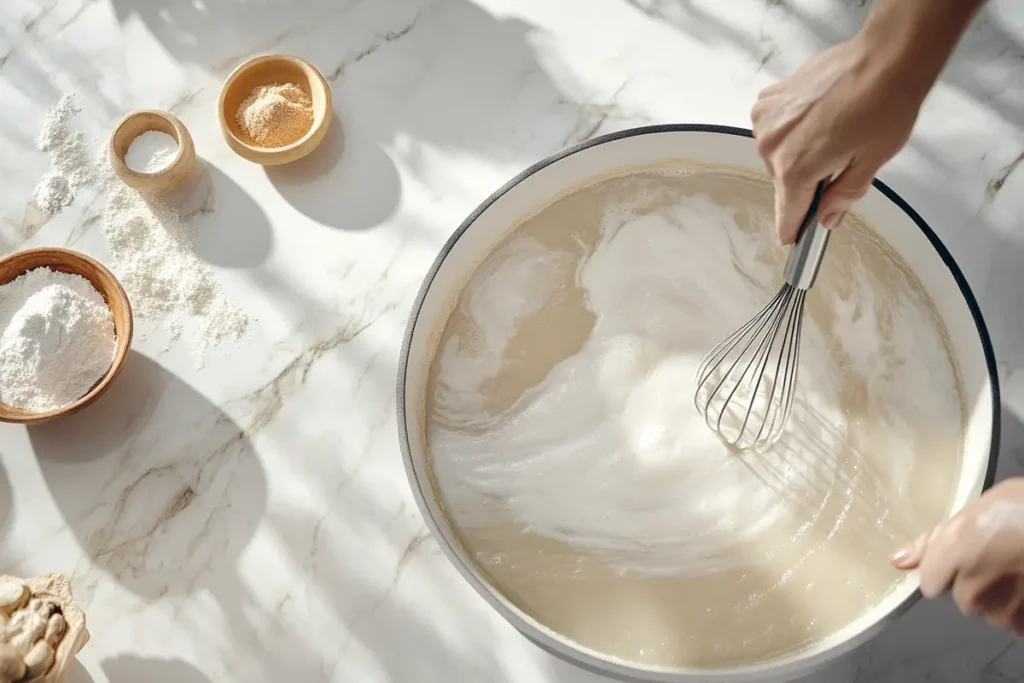
Common Mistakes to Avoid When Thickening Potato Soup
1. Adding Too Much Thickener
One common mistake when figuring out what is the thickener in potato soup is adding too much. Using too much flour, cornstarch, or blended potatoes can make the soup overly thick and heavy. Always add thickening agents gradually, stirring and checking the consistency after each addition. This approach ensures you achieve a creamy texture without compromising the soup’s flavor or feel.
2. Skipping Consistency Adjustments
Sometimes, potato soup can end up either too thick or too thin. Many people skip the important step of adjusting consistency. If the soup feels too dense, add a bit of warm broth, milk, or cream to thin it out. On the other hand, if it’s too watery, blend more potatoes or create a cornstarch slurry to thicken it. Always stir thoroughly to maintain a smooth, even texture.
3. Using High Heat with Dairy-Based Thickeners
When using dairy products like heavy cream or sour cream, high heat is a common culprit for curdling. To prevent this, always lower the heat before adding dairy-based thickeners. Stir gently and let the soup warm slowly to blend the flavors without separating the ingredients.
Final Thoughts on Potato Soup Thickeners
Why Thickeners Matter in Potato Soup
Thickeners are the secret to turning a simple potato soup into a comforting, restaurant-worthy dish. Whether you prefer the simplicity of blending potatoes or the richness of cream, the thickener you choose defines the soup’s texture and flavor. Understanding what is the thickener in potato soup empowers you to customize your recipe for any occasion, dietary need, or personal taste.
Encouraging Creativity in the Kitchen
Making potato soup is more than just following a recipe—it’s about experimenting and discovering what works best for you. Start with the basics, like blending cooked potatoes, then explore other options such as cornstarch, cream cheese, or even blended vegetables like carrots or cauliflower. Adjust flavors and textures to suit your mood, and don’t be afraid to try something new.
For more inspiration, visit our guide to enhancing potato soup flavor to make every bowl a masterpiece. Let me know if you’d like additional sections or further refinements!
